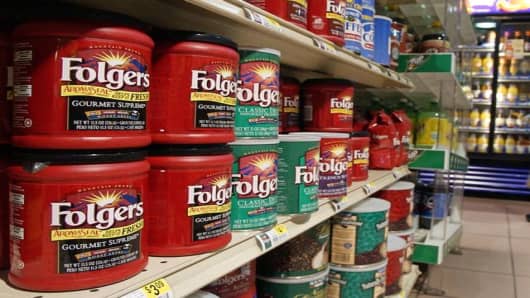Clayton Daley, Jr. Procter & Gamble’s chief financial officer, told CNBC’s “Squawk Box” that the company doesn’t need to make future acquisitions to boost profits.
“There’s still some hard lifting to do to get the Gillette acquisition done with excellence,” Daley said Tuesday. “We do not need acquisitions to deliver our growth strategy. We think if we deliver 4% to 6% sales growth, double-digit earnings per share growth, do a good job on cash flow, we’re going to do well in the long-term. If you look back historically, Proctor & Gamble has out-performed the S&P by over 200 basis points over five-, 10-, 15-, 20-, 25- and 30-year periods. That’s a great track record. We think we can keep (it) up.”
Procter & Gamble, a Dow component, reported third-quarter net income of $2.51 billion, or 74 cents a share, compared with $2.21 billion, or 63 cents a share, for the same period a year ago. Revenue increased 8% to $18.69 billion. The consensus Wall Street earnings estimate was 74 cents a share.
“The domestic homecare business is doing well,” Daley said. “The developing markets, as a group, are doing double digits and it’s clearly one of the things that’s helping us get to the upper end of our ranges.”


